4 Superfoods in Jamaica That Just Might Improve Your Health
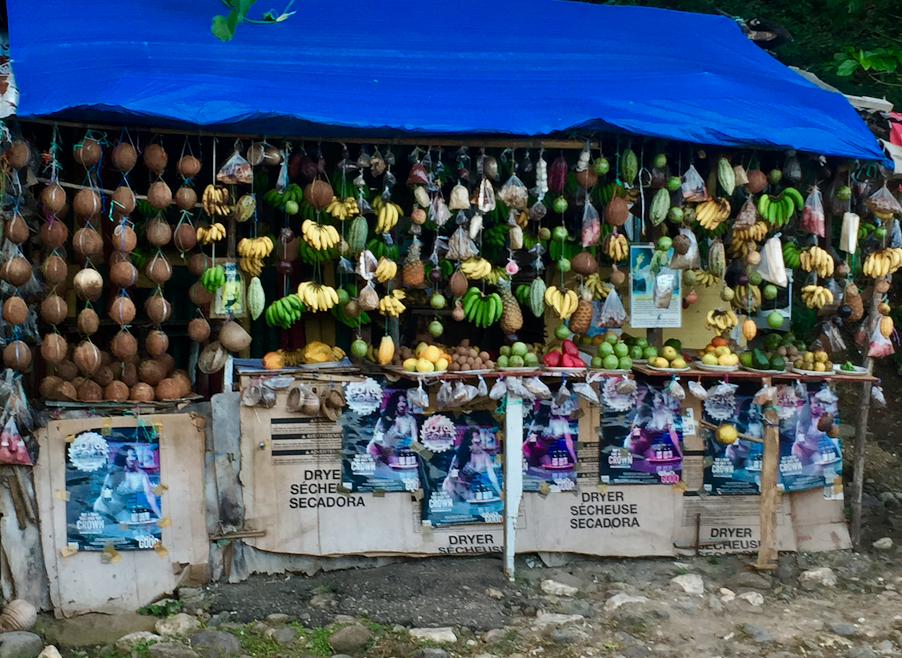 When it comes to our health, we all want to do our best. Could that dictate time in Jamaica, indulging in delicious fresh fruits that qualify as “superfoods?” Maybe it should. These fruits are vitamin and mineral loaded gems. They may just be what the doctor ordered…or should order, if he wasn’t so intent on peddling drugs. What qualifies them as superfoods? This is what my research has unearthed.
When it comes to our health, we all want to do our best. Could that dictate time in Jamaica, indulging in delicious fresh fruits that qualify as “superfoods?” Maybe it should. These fruits are vitamin and mineral loaded gems. They may just be what the doctor ordered…or should order, if he wasn’t so intent on peddling drugs. What qualifies them as superfoods? This is what my research has unearthed.
Before we get going, let’s define what makes a food a superfood.
A superfood is basically any food that contains an extremely dense level of vital nutrients, vitamins and/or minerals, as well as antioxidants. They also include “good” fats, healthy enzymes or other healthy properties that enhance health, treat illness and lower the risk of or prevent certain diseases.
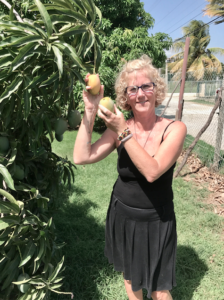 I think the majority of us have heard of and enjoyed mangos, papayas and guavas. Most of the more “exotic” fruits we have access to, especially in the cold Northeast USA, are obviously imported.
I think the majority of us have heard of and enjoyed mangos, papayas and guavas. Most of the more “exotic” fruits we have access to, especially in the cold Northeast USA, are obviously imported.
While they are good in a pinch, coming to Jamaica and seeing them hanging from the trees in my own yard is an experience like none other. In fact, Jamaica has been great for my health in many ways, which you can read about in my post, Jamaica: For Your Health.
Getting up in the morning, wandering through the dewy grass in my jammies and spying the first ripe mango of the season? It’s like winning the lottery combined with finding treasure.
Fresh from-the-tree mangos, still warm from the sun, drip with juice that runs all the way down to my elbows. Strings in my teeth? Totally worth it. That’s what they make dental floss for, right?
Yes, mangos are delicious but are they a superfood?
Research has shown that mangos can prevent and even stop certain colon and breast cancer cells in lab studies. They also showed a bit of impact on lung, leukemia, and prostate cancers. The breast and colon cancer cells underwent “apoptosis,” or programmed cell death, but the cancer killing properties in the mango, called “polyphenolics,” did not harm normal cells.
 Imagine being treated for cancer with something that didn’t kill anything except the evil cancer cells. No hair-loss, nausea or any of the multitude of chemotherapy side effects would be amazing, wouldn’t it?
Imagine being treated for cancer with something that didn’t kill anything except the evil cancer cells. No hair-loss, nausea or any of the multitude of chemotherapy side effects would be amazing, wouldn’t it?
And, before you flip out, no, I’m not saying mangos cure cancer. What I AM saying is that people ARE researching more natural ways to kill cancer cells and there are foods that fall into that category. If you can give your body one more tool to help keep you healthy, why not use it?
Did I need more reasons to eat mangos? No. I love them. Like, I really LOVE them. My stays in Jamaica are scheduled in such a way that I am guaranteed to get mangos. In fact, no matter where I go, if the country grows mangos, I hunt them down. If I can get one, I’m happy…a bucket-full? I’m ecstatic.
How do you pick a good mango…if you aren’t blessed to have them growing in your yard?
Most grocery stores around the world sell mangos, in season or not. When choosing your mango, judge it more by the firmness of the fruit rather than the color. If you push gently and it feels mushy, it’s too ripe. Hard means it’s not ready yet. When it has just a little give under your finger, and a sweet, fruity aroma on the end where the stem grows, it’s perfect.
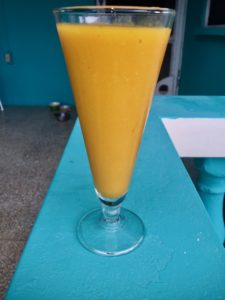 If you buy your mango a little less than ripe, keep it at room temperature until it’s ready. Do not refrigerate or it will not sweeten as it softens. Need to ripen it faster? Place it in a paper bag for a few days, checking it at regular intervals for perfection.
If you buy your mango a little less than ripe, keep it at room temperature until it’s ready. Do not refrigerate or it will not sweeten as it softens. Need to ripen it faster? Place it in a paper bag for a few days, checking it at regular intervals for perfection.
I really stink at catching store-bought fruit at peak once I get it home. I’ve thrown away so many over-ripened mangos, as well as avocados, over the years. I’m trying to recapture the flavors I experience at home in Jamaica. Just keep a close eye on them and you’ll be fine. Once they are ripe, they will keep in the refrigerator for about a week.
Not eating your ripened mangos fast enough, or just not in the mood? First, have your head examined. Then, you can peel and chop them, bag them up and freeze them for up to six months. This is how I enjoy Jamaica when I’m there outside of mango season. You can cook with them, use them in smoothies, make jams or even thaw them out and eat them as they are.
One of the most alien-like fruits that makes the superfoods list is the under appreciated, ugly soursop.
Never heard of soursop? It’s an odd-looking green, spiny fruit. Had I never been introduced to it by a dear Jamaican lady, Miss June, I might not have ever even picked one up, let alone tasted it. In my mind, it looks like it’s related to one of the nastiest tasting fruits I’ve ever tried, the Noni. That alone nearly scared me off.
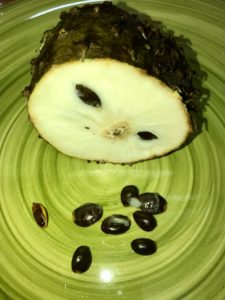 The flavor is hard to describe, somewhere between pineapple and pear, with maybe a hint of citrus. Equally impossible to explain is the texture. Again, it makes me think of a fibrous version of pear but very white and almost frothy.
The flavor is hard to describe, somewhere between pineapple and pear, with maybe a hint of citrus. Equally impossible to explain is the texture. Again, it makes me think of a fibrous version of pear but very white and almost frothy.
Like many tropical fruits, the soursop has very large seeds. They are encased in little jackets. It took me a while to figure out how to most effectively remove it from the skin.
It doesn’t really peel nor can it be scooped out easily without tearing the skin when ripe. And popping out the seeds destroys the flesh and loses too much of the precious juice.
To use the pulp of the soursop without having to squeeze every single seed out of their casing, I had to come up with a way. In the end, I discovered that if I cut across the fruit in 1/2 inch pieces I end up opening many of those pesky seed pods and the seeds easily slide out. Then, laying the slices flat on the cutting board, I can hold the knife vertically and cut the outer skin away.
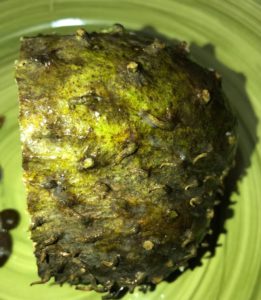 Choosing a soursop in the market is pretty simple.
Choosing a soursop in the market is pretty simple.
Choose fruits with dark green skin with numerous pliable spines on the surface. Avoid fruits with bruises or blemishes on the skin.
Like the mango, don’t buy a rock-hard or a mushy soursop. Feeling just the slightest give under finger pressure is just right. When the tips of the spines break off easily, the fruit is just right!
Storing soursop is simple, too. Store the under ripe fruit at room temperature. Once the fruit is ready, store it in the refrigerator for up to 2 days. Be warned, it goes from perfect to gross very quickly so use it up or freeze it.
I love to keep some in the fridge all of the time to toss into smoothies. Light and refreshing, it also makes fabulous sorbet. The pulp can also be frozen, well wrapped, for up to a year and still maintain its nutritional value.
Why does soursop rate as a superfood?
Soursop is abundant in folate, niacin, thiamine, vitamin C, calcium, magnesium, potassium, and fiber. This tasty fruit is used in holistic medicine to treat an upset stomach, coughs, asthmatic symptoms, skin conditions, gout, fever and as a mild, natural sedative.
The leaves, fruit and seeds have been used for centuries in Asian and South American medicine. Said to have anti-viral, anti-inflammatory and anti-parasitic properties, it is high in acetogenins, a compound in the fruit with incredible chemo-therapeutic properties.
The claim that it can treat cancer causes great controversy. The leaves and seeds of the soursop tree also contain potentially poisonous compounds like anonaine, hydrocyanic acid, and muricine. One would be wise to consult a doctor before using it this way, especially if pregnant.
Striving to have great looking skin? Try the guava!
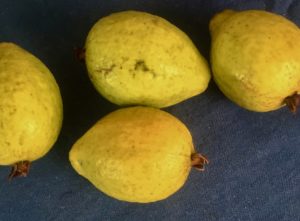 8 ounces of guava has nearly 5 times the vitamin C, important in collagen production, as a medium-sized orange.
8 ounces of guava has nearly 5 times the vitamin C, important in collagen production, as a medium-sized orange.
Research has shown that women who eat a lot of vitamin C-packed foods have fewer wrinkles than women who don’t. Sign me up!
Guava is also said to protect against food-borne pathogens such as Listeria and Staph, according to research by microbiologists in Bangladesh. If you are frequenting “questionable” food sources in your travels, this might be an important fruit to add to your diet. But does this rank the guava as a superfood?
A studies by scientists have found that the little guava has as much antioxidant activity as some well-known superfoods like blueberries and broccoli. We all know how important that is to our overall health and well-being. The bonus is, there are tons of ways to enjoy a guava (and they taste better than broccoli.)
How do you find a great guava? Just follow your nose.
The first time I walked through my yard in Jamaica, I was drawn in by an unfamiliar, citrus type aroma. A ripe guava has a flowery fragrance, gives a bit to the touch, and has a thin, pale green to light yellowish rind. I like mine very yellow. The flavor is a sweet and sour experience.
Guava can actually be eaten at just about any point in its maturation but I prefer mine when they have just begun to soften.
This makes it tricky to harvest them because they tend to fall off of the tree exactly upon ripening. The bugs love them, too and we fight over each one!
The skin is similar to the thickness of a pear. The flesh is pink or white. You can either eat the entire guava or cut it in half, scoop out the seeds and then the flesh.
The small, black seeds, although considered edible, are like eating tiny rocks
They can really wreck a smoothie, sorbet or other treat. It can be very hard to get every single one out without sacrificing the flesh. For this reason, I usually stick to devouring them whole and swallowing quickly before the seeds get lodged in my teeth.
One cup of sliced guava provides 9 grams of dietary fiber, nearly twice the amount of fiber in a bowl of bran cereal. That’s a LOT of fiber from a fruit that is only slightly larger than a golf ball. The seeds of the guava, especially when swallowed whole, are great for those suffering from constipation.
A guava has a vitamin A content that is five times that of an orange. It also has stellar amounts of protein, potassium, fiber, and folate, and possibly more vitamin C than any other fruit. Talk about an action-packed superfood!
Do you have digestive issues like gas, bloating, nausea or diarrhea?
People often assume that because I gave birth to ten children I must’ve had easy pregnancies, but that is far from the truth. I used to “get sick” until I was too big to bend over. Papaya, fresh and dried, helped calm my stomach and saved me from becoming dehydrated or malnourished.
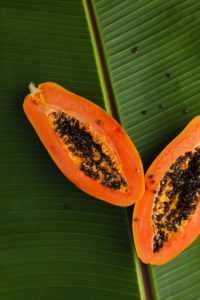 Most fruits and vegetables contain few digestive enzymes with the exception of papaya. Not only are papaya rich in vitamin A, vitamin C, potassium and phosphorous, they also contain a unique protein digesting enzyme that is capable of digesting 200 times its own weight in protein. These enzymes help improve digestion in amazing ways.
Most fruits and vegetables contain few digestive enzymes with the exception of papaya. Not only are papaya rich in vitamin A, vitamin C, potassium and phosphorous, they also contain a unique protein digesting enzyme that is capable of digesting 200 times its own weight in protein. These enzymes help improve digestion in amazing ways.
Ripe papaya is also a beneficial source of antioxidant vitamin C, vitamin E and carotenoids like beta-carotene and lycopene. The high levels of these valuable nutrients can help protect your skin against free radicals known to cause damage that leads to wrinkles and other visible signs of aging.
The enzyme, papain, in the flesh and skin of papaya fruit actually breaks down dead skin cells and helps promote skin renewal when used topically on the face or body. Skip the expensive chemical facials and use papaya next time!
How do you choose and use a papaya?
The soft, orange, juicy flesh of a properly ripe papaya always fools my mind into thinking it’s going to taste like cantaloupe but it’s really nothing like that. A little on the sweet side, its flavor is really mild. I find it makes a healthy addition to my smoothies as well as fruit plates and salads.
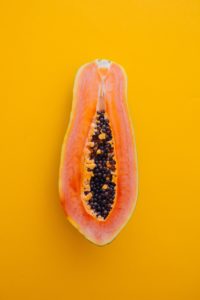 Choose a papaya that is mostly yellow and a little green to fully ripen at home. They are fully ripe when bright yellow. Pick one that is a little firm, yielding to gentle pressure, has smooth skin and feels heavy for its size.
Choose a papaya that is mostly yellow and a little green to fully ripen at home. They are fully ripe when bright yellow. Pick one that is a little firm, yielding to gentle pressure, has smooth skin and feels heavy for its size.
To ripen, leave at room temperature for a few days, using the paper bag trick used for mangos if needed. Once ripened, place them in a plastic bag and put them in the fridge.
Don’t let them go too far as they go from ripe to inedible mush very quickly. When ripe, simply cut in half, scoop out the little black seeds (that look like caviar) and cut away the skin.
So if you’d like to improve your skin, relieve digestion problems, protect your eyes and heart and possibly lower your risk of many diseases like cancer, then consider the many health benefits of eating papaya. (This post is meant to be for informational and entertainment use and should not substitute the advice of your doctor.)
There are many, many fruits that we could add to this list but we are going to save those for future posts. We need to let this information sink in first, right? As one of my readers from Jamaican at Heart Facebook page pointed out: A papaya, mango, soursop or guava a day keeps the doctor away! (Thanks, Nicole Brown!)
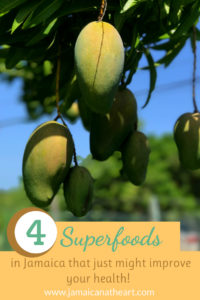
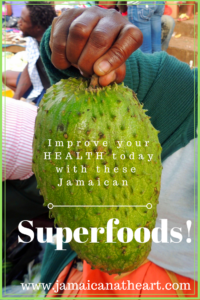 If you would like to read more about life in Jamaica for this American lady, check out this post.
If you would like to read more about life in Jamaica for this American lady, check out this post.
If you enjoyed this post, please slap the ole “share” button and send it straight to your Facebook, Pinterest or Twitter account! Thanks!
Care to learn more? Pick any of the multiple ways and spots on this website and sign up for our once in a while email updates. No spam nor will we fill up your inbox.
As always feel free to tell me about your favorite fruit or any cool stuff you think we need to know in the comment box below!
10 Amazing Travel Tips Free!

Subscribe and we will send you a very helpful FREE list of things to do before you travel abroad. Trust me, I've made every travel mistake in the book. Let me save YOU some headaches!
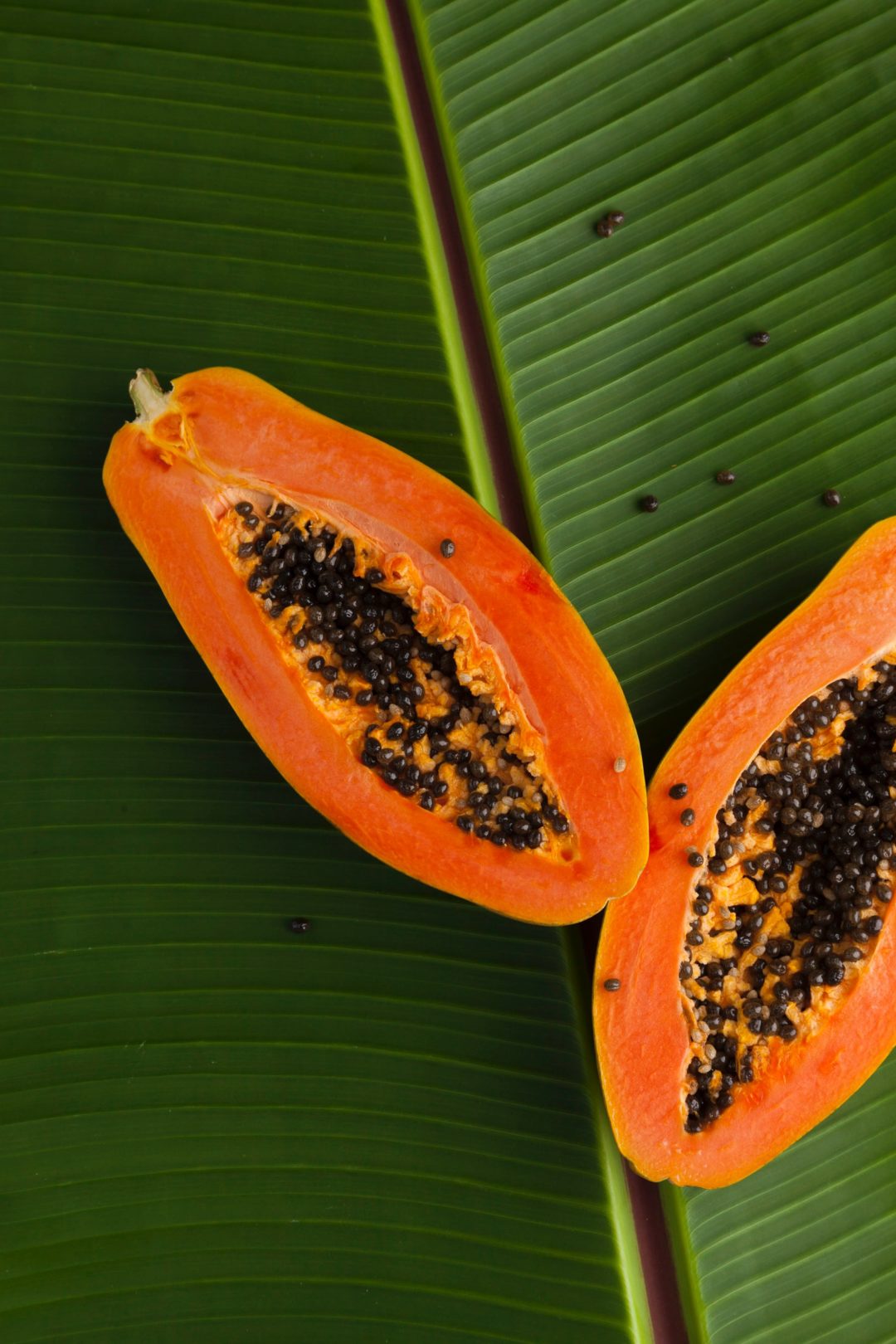
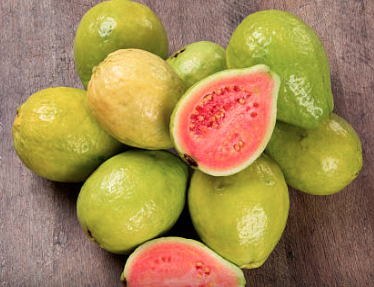
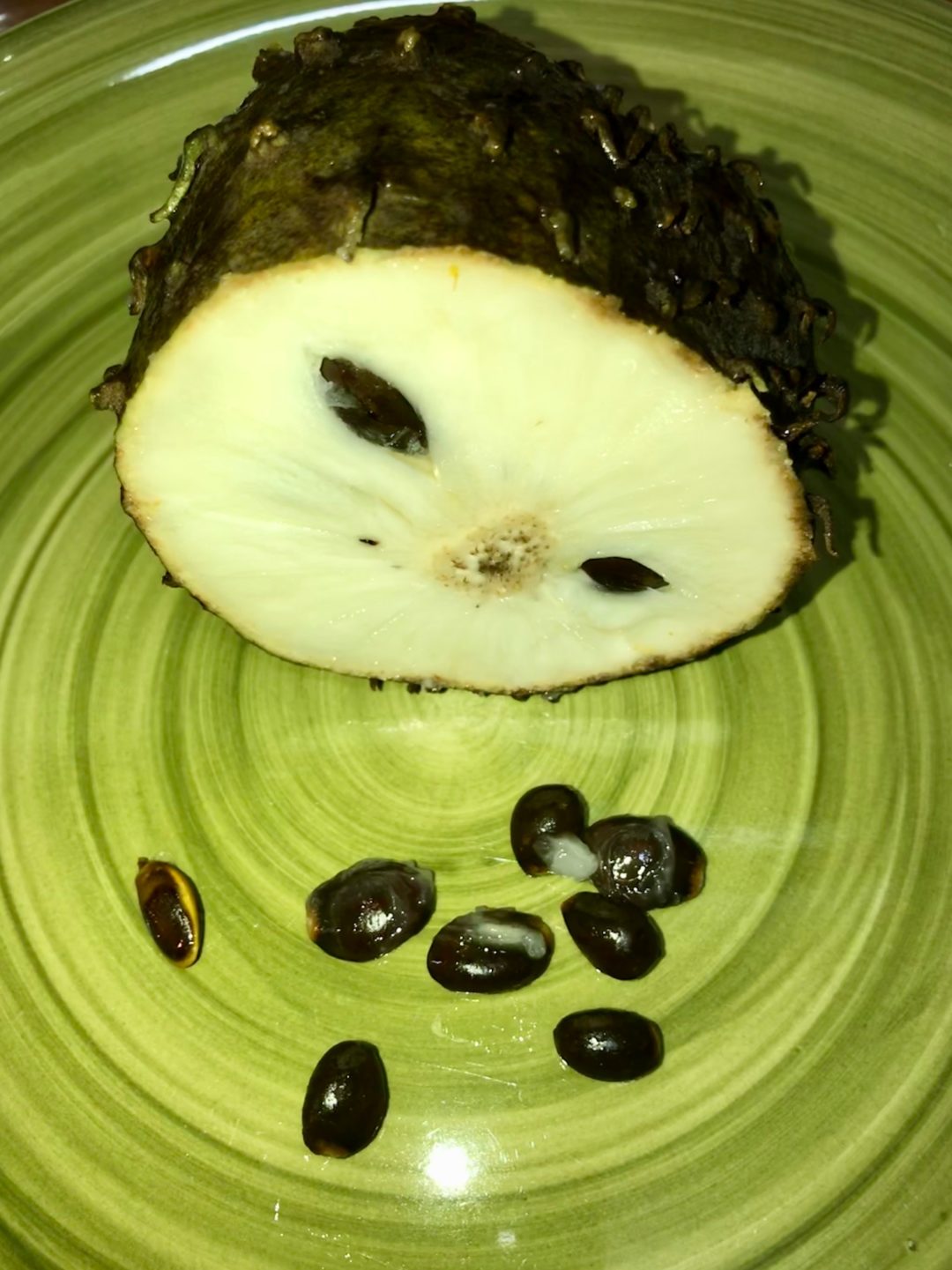
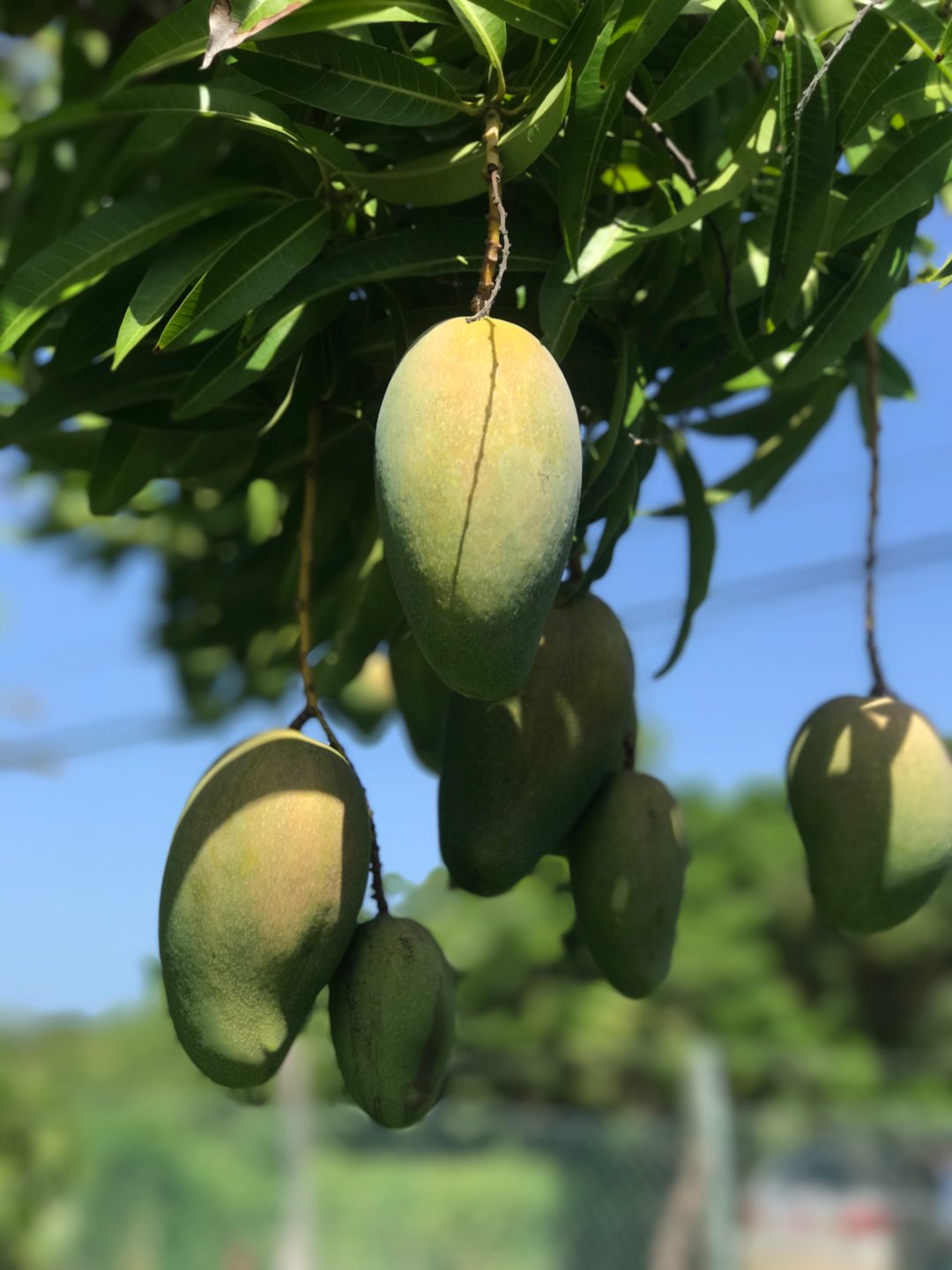
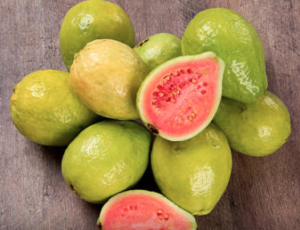


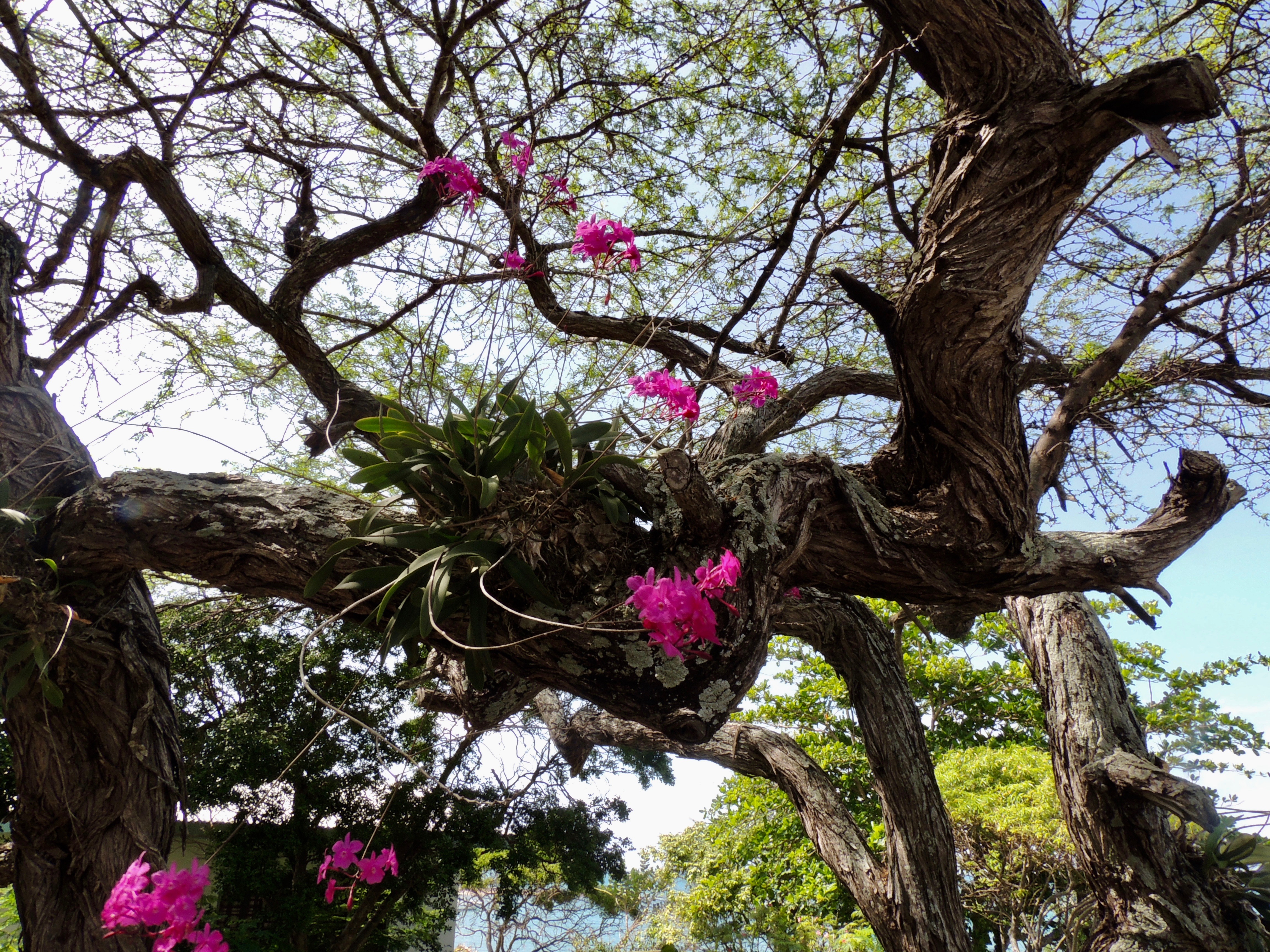
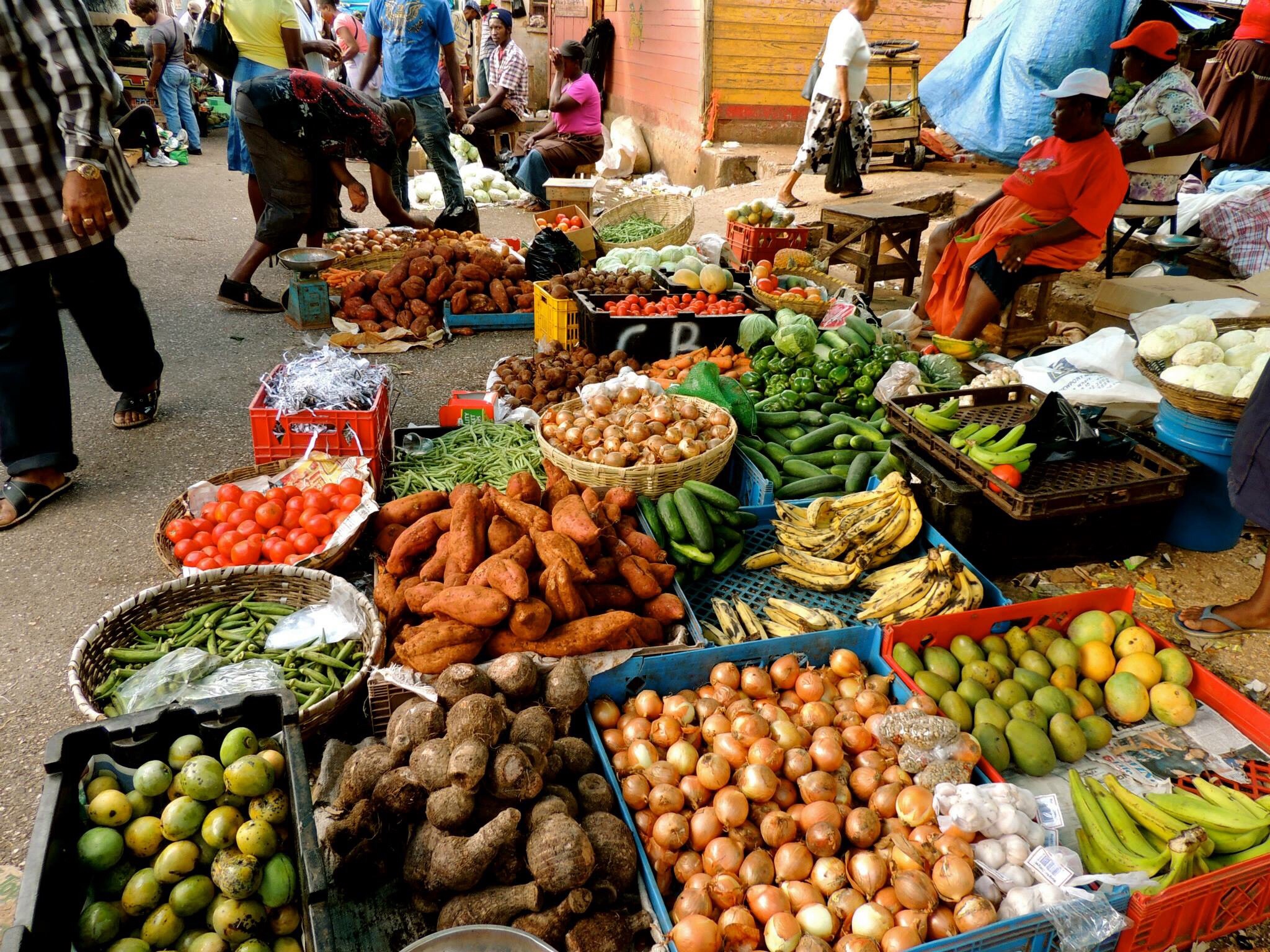



One Comment
Pingback: